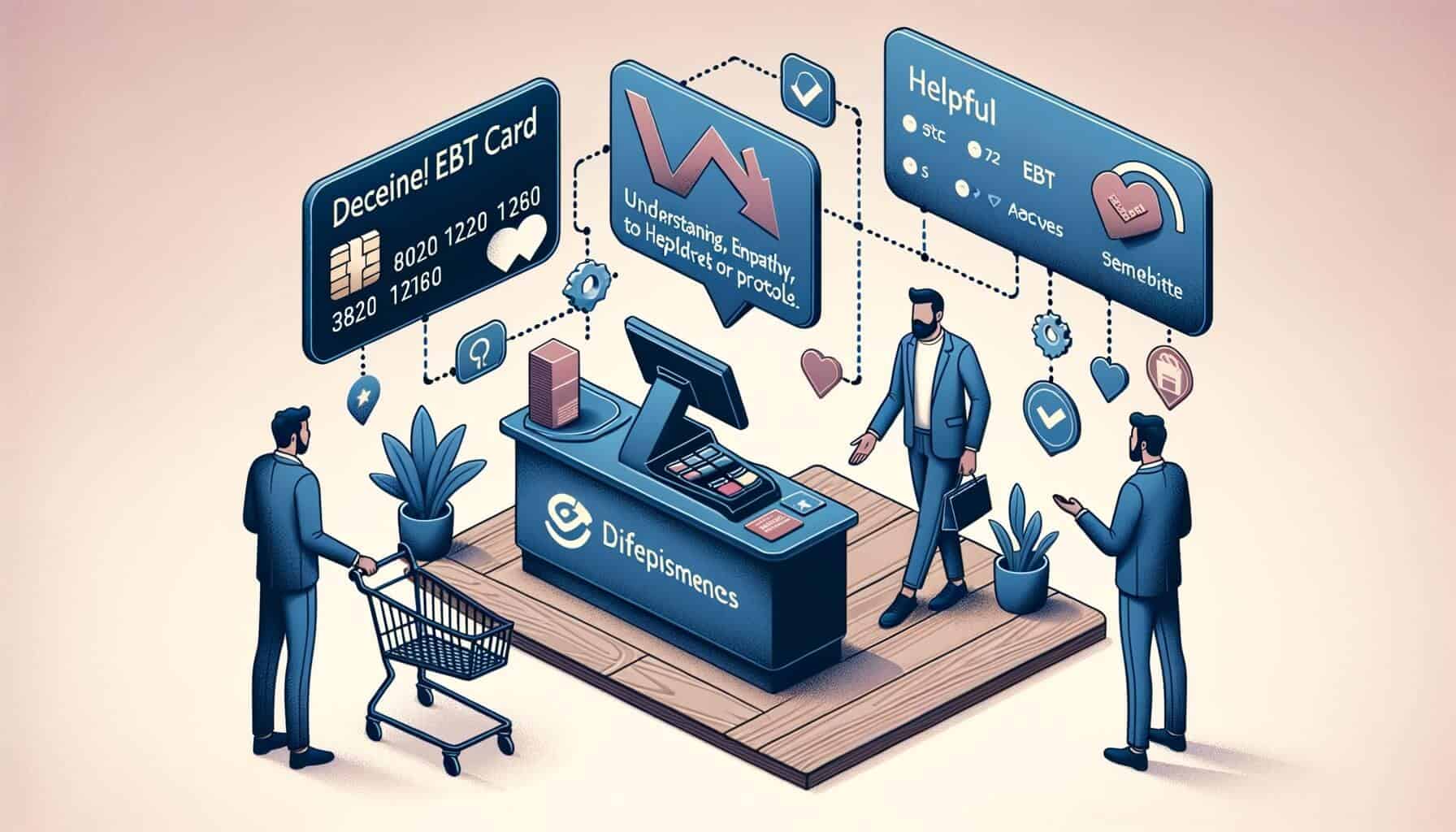
By Sharon Watson January 30, 2025
Electronic Benefit Transfer (EBT) cards are a vital resource for millions of low-income individuals and families across the United States. These cards allow recipients to access their government-issued benefits, such as Supplemental Nutrition Assistance Program (SNAP) funds, to purchase essential groceries and other approved items.
However, EBT card declines can be a frustrating experience for both customers and store owners. In this comprehensive guide, we will explore the common reasons for EBT card declines, how to ensure proper EBT card acceptance in your store, troubleshooting steps to handle declines, and how to educate store staff on EBT card policies and procedures.
Common Reasons for EBT Card Declines
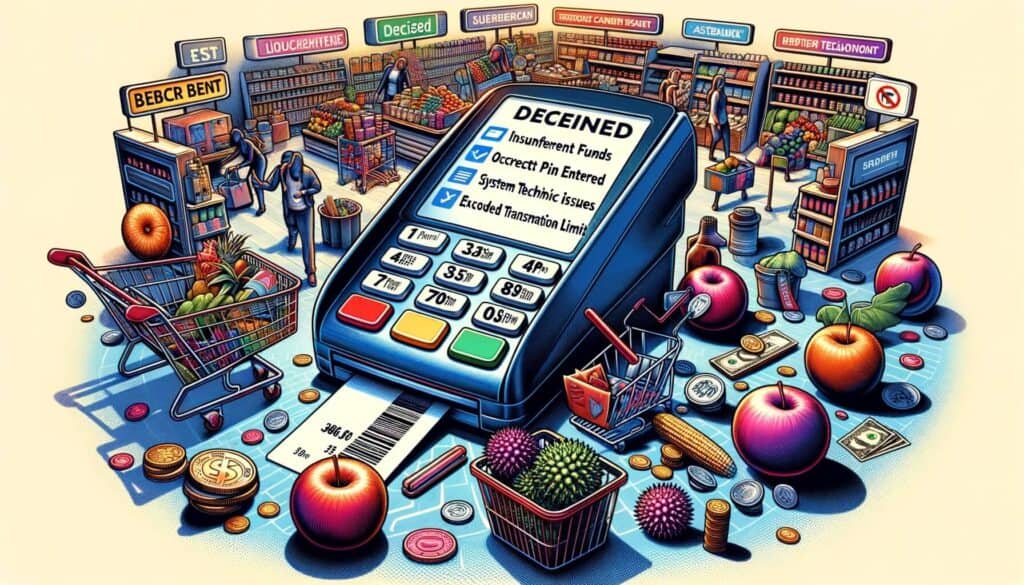
1. Insufficient Funds: One of the most common reasons for EBT card declines is insufficient funds. Recipients may have exhausted their monthly benefits or have a low balance remaining on their card. It is crucial for store owners to understand that EBT cards function similarly to debit cards, and customers can only spend the amount available on their card.
2. Technical Issues and System Errors: Another reason for EBT card declines is technical issues or system errors. These issues can occur due to problems with the EBT system, network connectivity, or equipment malfunctions. It is essential for store owners to be aware of these potential issues and have a plan in place to address them promptly.
3. Expired or Inactive EBT Cards: EBT cards have an expiration date, and if a customer’s card has expired, it will be declined. Additionally, if a recipient fails to use their EBT card for an extended period, it may become inactive. Store owners should be aware of these situations and inform customers about the need to renew or reactivate their cards.
4. Restricted Items: EBT cards can only be used to purchase approved items, such as groceries and essential household items. Certain items, such as alcohol, tobacco, and hot prepared foods, are restricted and cannot be purchased with EBT funds. If a customer attempts to buy these items, their EBT card will be declined.
Ensuring Proper EBT Card Acceptance in Your Store
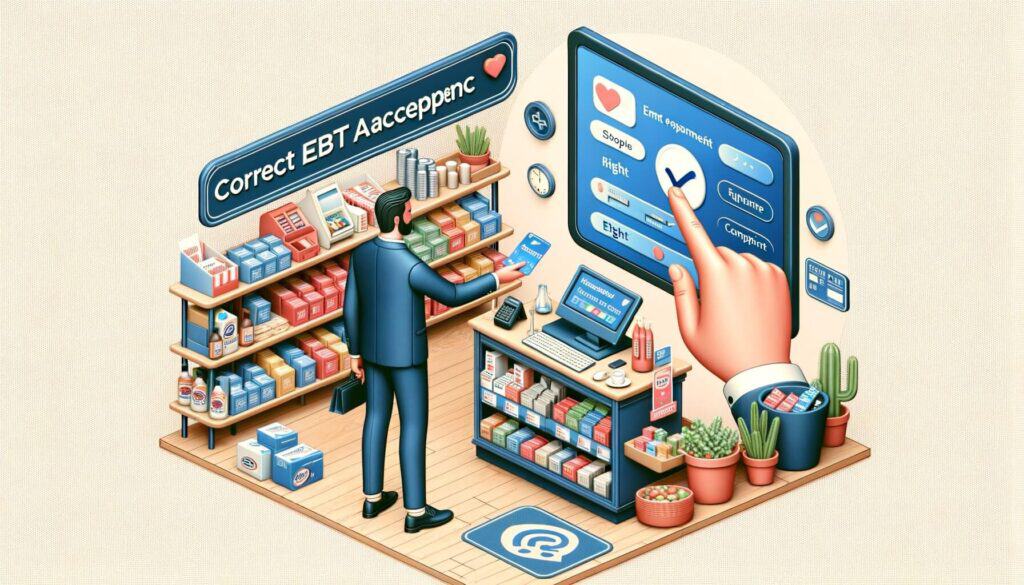
To ensure proper EBT card acceptance in your store, it is crucial to follow these guidelines:
1. Obtain the Necessary Equipment: To accept EBT cards, you will need a point-of-sale (POS) system that is compatible with the EBT system. Contact your payment processor or POS provider to ensure that your equipment is set up correctly and can process EBT transactions.
2. Display EBT Acceptance Signage: Place visible signage in your store to inform customers that you accept EBT cards. This will help customers identify your store as an EBT-friendly establishment and encourage them to shop with you.
3. Train Store Staff: Educate your store staff on the proper procedures for accepting EBT cards. They should be familiar with the EBT system, know how to handle declines, and be able to assist customers with any issues they may encounter.
4. Regularly Update EBT Information: Stay informed about any changes or updates to EBT card policies and procedures. This will ensure that your store remains compliant and can provide accurate information to customers.
Troubleshooting EBT Card Declines: Step-by-Step Guide
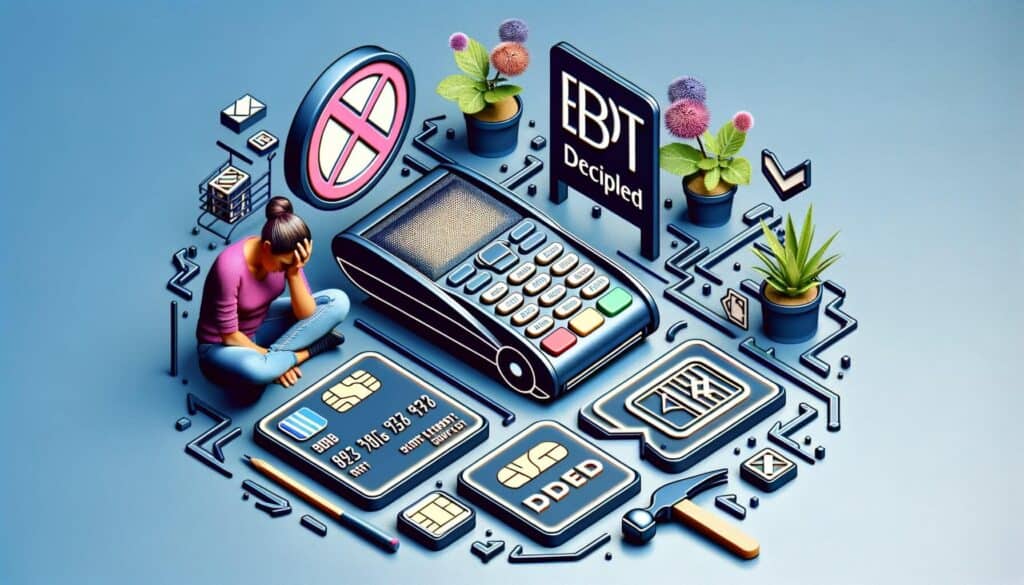
When faced with an EBT card decline, follow these step-by-step troubleshooting guidelines:
1. Verify Card Information: Double-check the card information entered into your POS system. Ensure that the card number, expiration date, and security code are correct. A simple typo or error in entering the information can result in a decline.
2. Check Card Balance: If the card is declined due to insufficient funds, politely inform the customer and suggest alternative payment methods. It is essential to handle these situations with sensitivity and respect, as customers may be relying on their benefits to purchase essential items.
3. Test Connectivity and Equipment: If you suspect a technical issue or system error, check your network connectivity and equipment. Ensure that your POS system is properly connected to the EBT system and that all equipment is functioning correctly. Restarting the equipment or contacting your payment processor for assistance may help resolve the issue.
4. Contact EBT Customer Service: If you have ruled out technical issues and the decline persists, advise the customer to contact the EBT customer service helpline. Provide them with the necessary contact information and any additional guidance you can offer.
How to Handle Insufficient Funds on an EBT Card
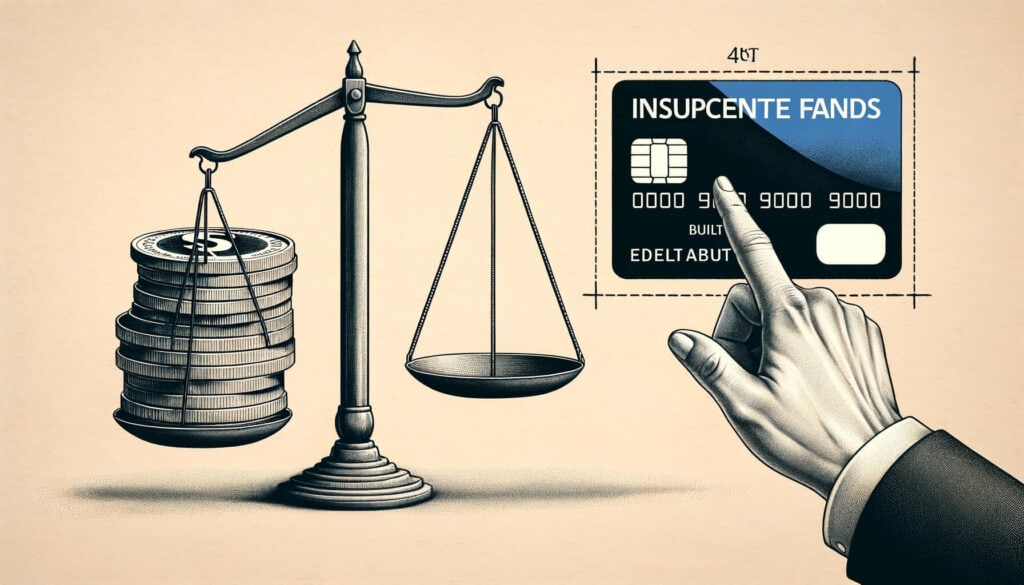
When a customer’s EBT card is declined due to insufficient funds, it is essential to handle the situation with empathy and provide alternative solutions. Here’s a step-by-step guide:
1. Politely Inform the Customer: Approach the customer respectfully and discreetly inform them that their EBT card has insufficient funds. Use a calm and understanding tone to avoid causing embarrassment or distress.
2. Suggest Alternative Payment Methods: Offer alternative payment options, such as cash, credit/debit cards, or other forms of assistance programs that your store may accept. If the customer does not have any other means to pay, consider providing them with information about local food banks or resources that can help meet their immediate needs.
3. Avoid Stigmatizing or Judging: It is crucial to treat customers with dignity and respect, regardless of their payment method. Avoid making assumptions or passing judgment based on their financial situation. Remember that EBT cards are a lifeline for many individuals and families, and they may be facing temporary financial hardships.
Dealing with Technical Issues and System Errors
Technical issues and system errors can be frustrating for both customers and store owners. Here’s how to handle these situations:
1. Assess the Situation: Determine whether the issue is isolated to a specific customer or if it affects multiple transactions. This will help you identify whether the problem lies with the customer’s card or your equipment/system.
2. Check Network Connectivity: Ensure that your store’s internet connection is stable and functioning correctly. If you suspect a connectivity issue, try restarting your router or contacting your internet service provider for assistance.
3. Restart Equipment: If the problem persists, restart your POS system and any related equipment, such as card readers or scanners. This simple step can often resolve minor technical glitches.
4. Contact Payment Processor: If the issue persists despite troubleshooting steps, contact your payment processor for further assistance. They can help identify any system errors or provide guidance on resolving the issue.
Addressing EBT Card Expired or Inactive Status
Expired or inactive EBT cards can lead to declines at the point of sale. Here’s how to address these situations:
1. Inform the Customer: Politely inform the customer that their EBT card has expired or is inactive. Explain the need to renew or reactivate the card to continue using their benefits.
2. Provide Information on Card Renewal/Reactivation: Offer guidance on how the customer can renew or reactivate their EBT card. Provide them with contact information for the appropriate agency or direct them to the relevant website where they can find the necessary instructions.
3. Offer Alternative Payment Methods: If the customer is unable to renew or reactivate their card immediately, suggest alternative payment methods. This could include cash, credit/debit cards, or other assistance programs that your store accepts.
Handling EBT Card Declines Due to Restricted Items
EBT cards have restrictions on certain items that can be purchased. Here’s how to handle declines related to restricted items:
1. Educate Customers: Display signage in your store that clearly outlines the restricted items that cannot be purchased with EBT funds. This will help customers make informed choices and avoid attempting to purchase prohibited items.
2. Politely Explain the Restriction: If a customer’s EBT card is declined due to a restricted item, politely explain the restriction and offer alternative options. For example, if a customer is attempting to purchase alcohol, suggest non-alcoholic beverages or other eligible grocery items.
3. Train Store Staff: Educate your store staff on the restricted items and how to handle declines related to these items. They should be prepared to provide guidance to customers and offer alternative options.
Educating Store Staff on EBT Card Policies and Procedures
Properly educating store staff on EBT card policies and procedures is crucial for providing excellent customer service and avoiding potential issues. Here’s how to ensure your staff is well-informed:
1. Conduct Training Sessions: Schedule regular training sessions to educate your store staff on EBT card policies and procedures. Cover topics such as card acceptance, common reasons for declines, troubleshooting steps, and handling customer inquiries.
2. Provide Written Guidelines: Create a comprehensive guide or manual that outlines the key information and procedures related to EBT card acceptance. Distribute this guide to all store staff and encourage them to refer to it whenever they have questions or need clarification.
3. Role-Play Scenarios: Conduct role-playing exercises to simulate various customer interactions and EBT card decline scenarios. This will help your staff practice their communication skills and ensure they are prepared to handle different situations effectively.
4. Encourage Continuous Learning: Stay updated on any changes or updates to EBT card policies and procedures and share this information with your staff. Encourage them to engage in continuous learning and provide opportunities for further training or professional development.
FAQs
Q1. What should I do if a customer’s EBT card is declined due to technical issues?
If a customer’s EBT card is declined due to technical issues, first check your network connectivity and equipment. Restarting your equipment or contacting your payment processor for assistance may help resolve the issue. If the problem persists, advise the customer to contact the EBT customer service helpline.
Q2. Can I accept EBT cards without a compatible POS system?
No, you need a compatible POS system to accept EBT cards. Contact your payment processor or POS provider to ensure that your equipment is set up correctly and can process EBT transactions.
Q3. How can I educate my store staff on EBT card policies and procedures?
Conduct regular training sessions, provide written guidelines, and encourage continuous learning. Role-playing scenarios can also be helpful in preparing your staff to handle different customer interactions and decline situations.
Q4. What should I do if a customer’s EBT card is declined due to restricted items?
Politely explain the restriction to the customer and offer alternative options. Train your store staff to handle declines related to restricted items and provide guidance to customers.
Conclusion
Handling EBT card declines in your store requires a combination of technical knowledge, empathy, and effective communication. By understanding the common reasons for declines, ensuring proper EBT card acceptance, troubleshooting step-by-step, and educating store staff, you can provide a positive experience for both customers and employees.
Remember to approach these situations with sensitivity and respect, as EBT cards are a lifeline for many individuals and families. By implementing the strategies outlined in this comprehensive guide, you can navigate EBT card declines with confidence and professionalism.